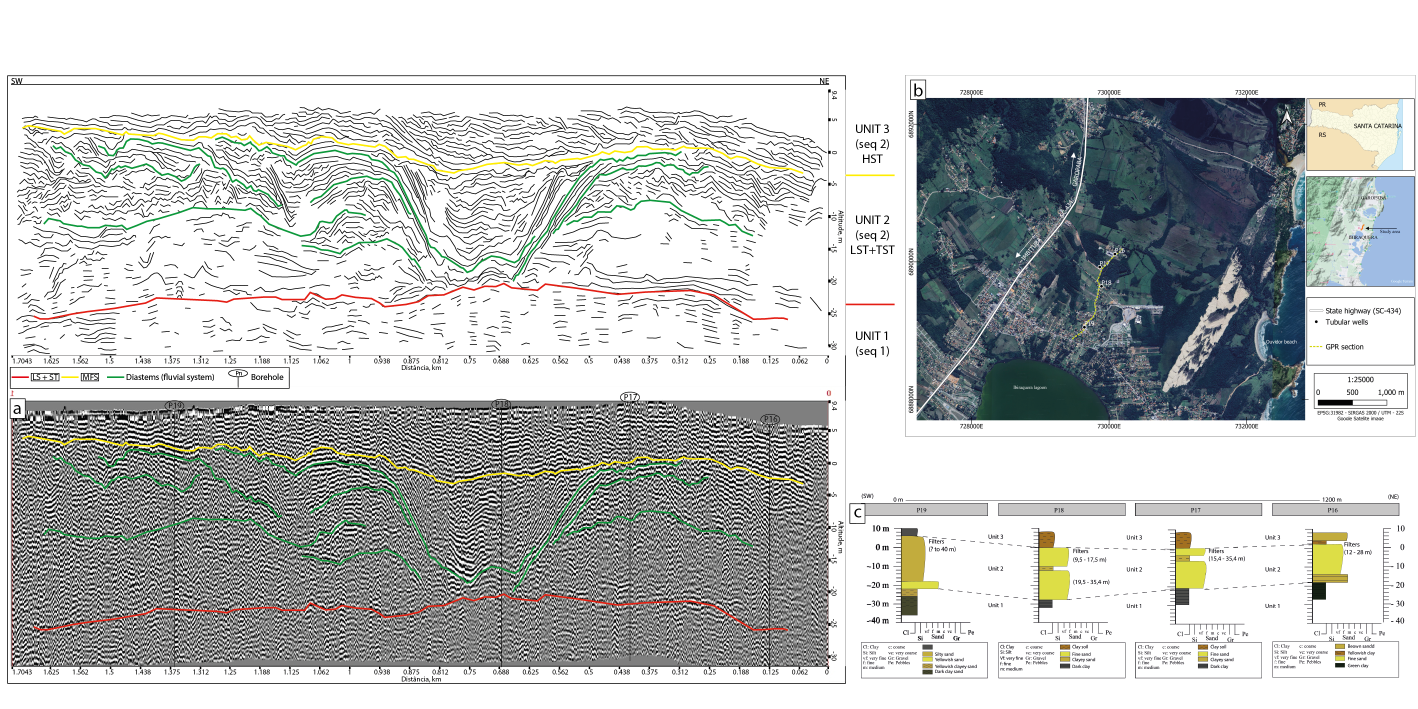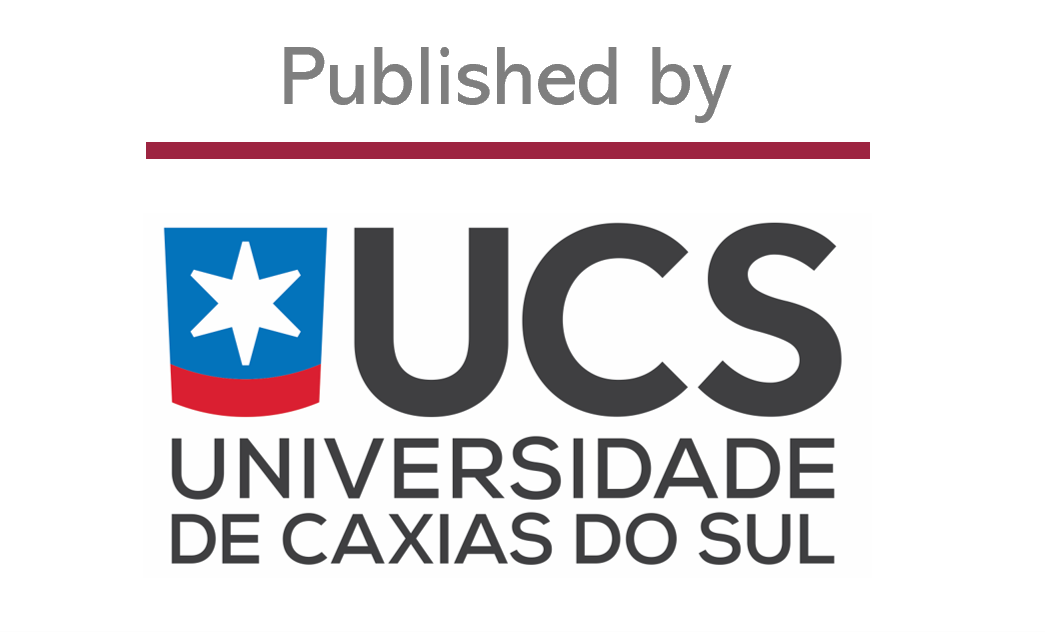Use of ground penetrating radar (GPR) for coastal aquifer characterization in Garopaba/SC
DOI:
https://doi.org/10.18226/23185279.e251425Keywords:
Georadar, hydrogeology, environmental stratigraphy, water resourcesAbstract
The work analyzes the sedimentary deposits of the coastal aquifer of the locality of Limpa, Garopaba (SC), through geophysics and well data. A ground penetrating radar section (GPR) was acquired in an area adjacent to 4 wells located in the south of the municipality, provided by the water and sanitation company (CASAN). Three lithostratigraphic units were identified, with a basal layer composed of clayey material, an intermediate layer predominantly composed of sand representing the aquifer unit, and a superficial layer composed of fine sediments, peat and sand. The GPR section presents a paleochannel feature within the aquifer unit, showing the lateral variation of facies and depositional architecture within a lithological unit. The interpretation of key surfaces, textures and reflector termination patterns led to the diagnosis that the intercepted sedimentary deposits represent two depositional sequences, probably of Pleistocene age, composed by the record of lagoon-barrier and fluvio-estuarine systems. The lateral and vertical variation of sedimentary deposits has a significant influence on the hydrodynamic behavior of aquifers, so that the detailed scale characterization of the coastal aquifer can help the management of water resources, especially in areas extremely vulnerable to contamination and with high water demands, as is the case of Garopaba.

Downloads
Published
How to Cite
Issue
Section
License
Copyright (c) 2025 Gabriel Barbosa Drago, Maria Luiza Correa da Camara Rosa, Pedro Antônio Roehe Reginato

This work is licensed under a Creative Commons Attribution 4.0 International License.
Declaração de originalidade e cessão de direitos autorais
Declaro que o presente artigo é original, não está sendo tendo sido submetido à publicação em qualquer outro periódico nacional ou internacional durante o processo de revisão. Através deste instrumento, em meu nome e em nome dos demais co-autores, porventura existentes, cedo os direitos autorais do referido artigo à revista SCIENTIA CUM INDUSTRIA. Contudo, a reprodução total ou parcial impressa ou eletrônica pode ser feita desde que o autor comunique oficialmente à revista. Declaro estar ciente de que a não observância deste compromisso submeterá o infrator a sanções e penas previstas na Lei de Proteção de Direitos Autorias. Declaro estar ciente de que a não observância deste compromisso submeterá o infrator a sanções e penas previstas na Lei de Proteção de Direitos Autorias (Nº9610, de 19/02/1998).




